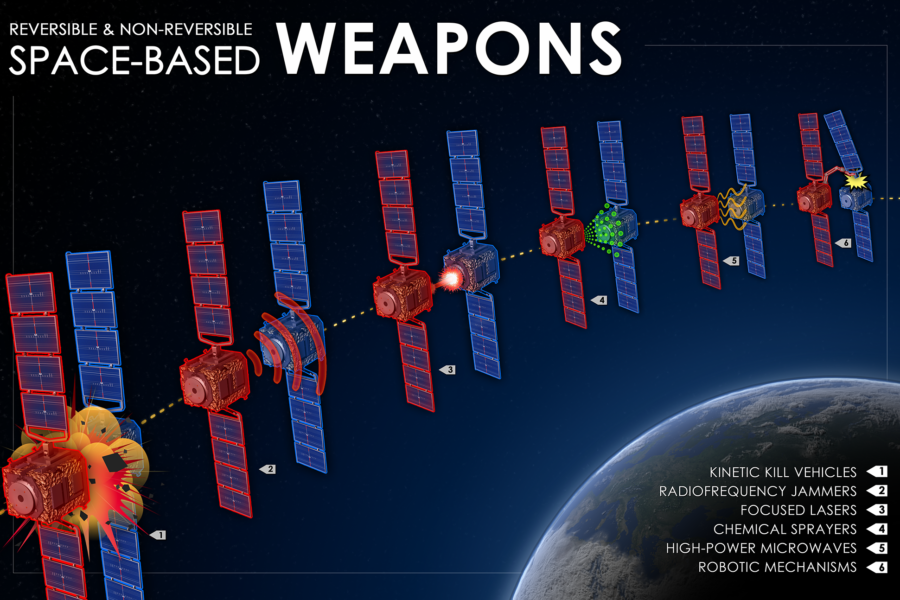As the United Nations General Assembly contemplates an international treaty to prevent an arms race in space, international support for such an effort appears to be gaining steam.
A “global wave of opinion,” meanwhile, in the form of an open letter, is adding momentum to the idea of first agreeing on a single urgent issue.
The United Kingdom’s Permanent Representative to the U.N.’s Conference on Disarmament Aidan Liddle said Oct. 6 that the U.K. plans to introduce a resolution in the current session to form a working group to study how to prevent “an arms race in outer space.” The U.N., he told the General Assembly’s First Committee, “must look broadly at the behaviors, actions, and omissions that could lead to conflict, not only at capabilities or placement of weapons.”
Michael Byers, co-director of the University of British Columbia’s Outer Space Institute, called a working group “the first step in treaty negotiations” during a webinar Oct. 12. Byers is UBC’s Canada Research Chair in Global Politics and International Law and also a law professor at Duke University. He is a visiting professor at several universities abroad. He is among a number of experts who signed an open letter in September calling for a limited-scope treaty to ban kinetic anti-satellite weapon tests similar to past tests performed by the U.S., China, Russia, and India. Other signers included representatives from academia, think tanks, and former diplomats and government officials.
The letter’s authors superimposed the debris trajectories from India’s 2019 test—only those pieces big enough to be tracked—onto a future orbital scenario involving four planned megaconstellations of communications satellites. While India made “a good-faith effort” to limit debris at the time, the future scenario of such a ground-launched missile rendered an altogether dangerous outcome.
“You get this very visual, almost shocking, insight into how dangerous another anti-satellite weapon test would be in this new environment—literally tens of thousands of additional satellites, and the debris all crossing those orbital shells,” Byers said. “The chances of a collision would be almost exponentially higher” and could render “at least part of low-Earth orbit too dangerous for astronauts and very risky” for satellites.
Scientists have known for decades that “one collision—by creating tens or hundreds or thousands of pieces of additional debris—will then increase the chances of subsequent collisions,” Byers said. “If another test takes place, perhaps by Pakistan or Iran or North Korea, it could be catastrophic.”
Byers said he’s optimistic that the limited treaty could be agreed on quickly for a few reasons: The “major spacefaring states don’t need to test anymore” and have the ability to simulate and conduct nondestructive “fly-by tests, where they just aim at a set of coordinates, rather than an actual satellite,” Byers said. He also cited the 1962 “test called Starfish Prime, at 400 kilometers above the Pacific Ocean,” which “worked much better as an anti-satellite weapon than the United States had expected,” Byers said. The test disabled six satellites, including three operational satellites belonging to the U.S.
Wihin a year, Byers said, the Soviet Union, the United States, France, and the United Kingdom negotiated the 1963 Limited Test Ban Treaty, which banned nuclear testing in space. “It was the first space treaty—it was before the Outer Space Treaty—so whether it was a realization of a risk to access to low-Earth orbit [or something else], the spacefaring states came together and negotiated, and that’s what we’re suggesting needs to be done with respect to kinetic anti-satellite weapons tests” today.
Byers said a wider space weapons treaty has been stalled in the U.N.’s Conference on Disarmament, which requires a consensus to pass measures, and applauded the U.K.’s strategy of taking the issue to the General Assembly, which instead requires a majority vote.
A vote could come within weeks, Byers predicted.
